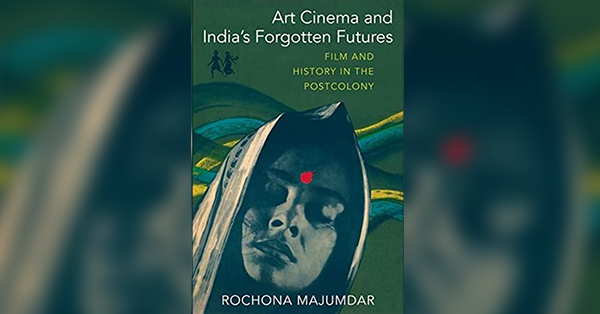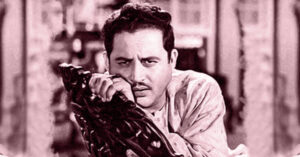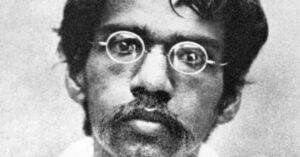Sudhir Mishra’s Yeh Woh Manzil Toh Nahin was aired on Doordarshan just once circa 1986-87. I speak of the final scene from memory where the ageing trio fails to save a youth activist – an act that would have helped deal with their guilt from an earlier betrayal. The movie ends with one of the failed threesome saying, ‘Koshish toh ki’.
Perhaps that line encapsulates best the efforts of the art film movement which gave us cinematic gems before slowly fading away in the onslaught of the home video boom, followed by cable TV and then followed by the multiplex phenomenon. These films were part harbingers of change and part victims of a larger move in the ethos and tastes in India.
While much is written about mainstream cinema with publishing houses queueing up to publish the memoirs of even lesser mortals from the margins of 70mm blockbusters, very few, if any, books are published on the art film movement of post-Independence India. Rochona Majumdar’s ‘Art Cinema and India’s Forgotten Future: Film and History In The Postcolony’ is a commendable attempt at filling this lacuna.
The author positions the art film directors as historians who were able ‘to theorise thus about India’s postcolonial condition, and to perceive in the medium of cinema the problems that would concern Indian historians for several decades.’
Once she locates these films as arenas where India’s postcolonial narrative was portrayed, even anticipated, Majumdar’s book shows the diverse legs on which this genre of cinema was mounted. The Nehru/s can safely be blamed for the root of art films – be it the commissioning of the venerable Marie Seton as the ambassador of good cinema, or the setting up of institutions like the Film Enquiry Committee, National Archives and Film Institute of India. The then Information and Broadcasting Minister Indira Gandhi encouraged Seton to travel away from the big cities with her set of cinemas designed to encourage good, discerning tastes among those who had been raised on a steady diet of naach-gaana.
There are several other fascinating characters in the story of the art film movement. As various stakeholders (filmmakers like Ray, scholars, government and cineastes) argue over what exactly new wave cinema was it is interesting to see the emergent of divergent, even combative views. In retrospect, 1969 is seen as a watershed year with the release of Basu Chatterji’s Saara Aakash, Mani Kaul’s Uski Roti and Mrinal Sen’s Bhuvan Shome. The chapter that deals with this phase of the movement is particularly engaging as it shows how Ray is skeptical, even acerbic essays questioned what exactly was new in the New Wave. The New Wave is also chronicled by Majumdar as a sibling to movements in literature and art, with the former being closely allied, with authors ranging from Nirmal Verma, Mohan Rakesh, Premendra Mitra all becoming part of the group that was hoping to script cinema’s future.
The film societies of Kolkata are in sharp focus, with the two centenarians, Ray and Chidananda Dasgupta navigating the movement, choosing members, and choosing appropriate films to watch. ‘The “snobbery” was expressed in the restricted screenings and discussions of a handful of directors, mainly Ray, Ghatak and Sen. It is interesting to note that the absence of Tapan Sinha and Tarun Majumdar who were ‘neglected by cine clubs’.
Equally engaging is the emergence of cine clubs and groups that encouraged good taste and international exposure to world cinema. In today’s world the cut is made by those who download Mubi. Back then, the situation was more complicated. The film societies of Kolkata are in sharp focus, with the two centenarians, Ray and Chidananda Dasgupta navigating the movement, choosing members, and choosing appropriate films to watch. ‘The “snobbery” was expressed in the restricted screenings and discussions of a handful of directors, mainly Ray, Ghatak and Sen. It is interesting to note that the absence of Tapan Sinha and Tarun Majumdar who were ‘neglected by cine clubs’.
Majumdar’s account of the challenge of finding and sourcing films is fascinating. While some of the stringency of selecting members (women were virtually excluded) might seem arbitrary, the determination to source films is remarkable.
Ram Haldar (owner of Kamalaya and another fascinating cameo in the book) writes to US ambassador John Kenneth Galbraith with the zeal of a film enthusiast: “You are not the real ambassador of America… These ambassadors (films) in tin cans can do much more effective work… among the cineastes of India.”
While the first half of Majumdar’s book focuses on the chronology, the objectives and the creation of a cinema culture both from the perspective of filmmakers and from the perspective of creating an audience, the second half focusses on the Sen-Ghatak-Ray triumvirate. Each director has a chapter dedicated to him, and Majumdar wisely focusses on one particular aspect of each maestro’s auteur. The most striking of the three is the chapter on Ghatak, and his use of music in Meghe Daaka Tara, Komal Gandhar and Subarnarekha. That said, Majumdar’s exploration of the ‘present tenseness’ in Ray’s Calcutta trilogy of Seemabaddha, Pratidwandi and Jana Aranya is compelling as it traces the director’s trajectory from the from the Apu trilogy.
The book ends with the demise of the art film movement, and interesting cites one of the most celebrated international film productions about and in India as a point from where state patronage detached itself increasingly from the art film project.
Majumdar also mentions television as one of the reasons for the waning of the art film movement. However, the relationship between these films and the Doordarshan years is a complex one. Between the regional film slot every Sunday at 1.30pm (post the news for the hearing impaired) and the late-night film schedules, a whole generation saw some of the classics of art film directors from across India on the small screen.
Majumdar’s book is an academic one with a great deal of research evident without being overwhelming. However, it has enough literary flair and engaging anecdotes to engage the regular film buff, too.
Art Cinema And India’s Forgotten Futures: Film and History in the Postcolony
Rochona Majumdar
Published by Columbia University Press (distributed by Penguin)
Pp 307






